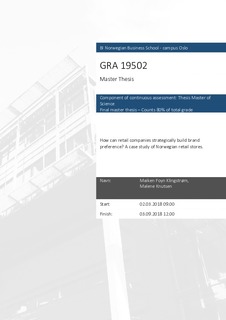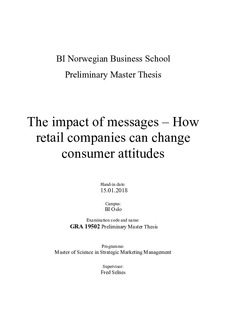| dc.description.abstract | The present study draws on in-depth expert interviews with seven retail company
representatives to propose which firm-controlled variables that can serve as
drivers for brand preference. Extant literature, secondary data, and representatives
interviewed for this study view brand preference as a consequence of brand
awareness and brand loyalty. In contrast with existing theory, this study proposes
that focusing on having a consistent strategy, brand awareness, and customer
experience serves as three prerequisites for being able to manage brand
preference. In addition, the results suggest two drivers of brand preference: 1)
Crafting and measuring goals, and 2) Brand strategy management. In crafting
goals, the result suggests that having brand awareness and brand loyalty as parent
goals, have a positive influence of brand preference performance. The study
highlights the use of key performance indicators and marketing analytics as
important in reaching the parent goal, and also increase brand preference.
Findings related to brand strategy management propose five core marketing
activities a company needs to implement in order to increase brand preference.
These include: place optimization, product selectivity, consistent price strategy,
differentiation, and omni-channel synergies.
Altogether, the results shed light on the link between firm-controlled activities and
brand preference in a practical matter. Theoretical and managerial implications are
discussed to help managers and retail companies to get the most value out of their
marketing activities. | nb_NO |

